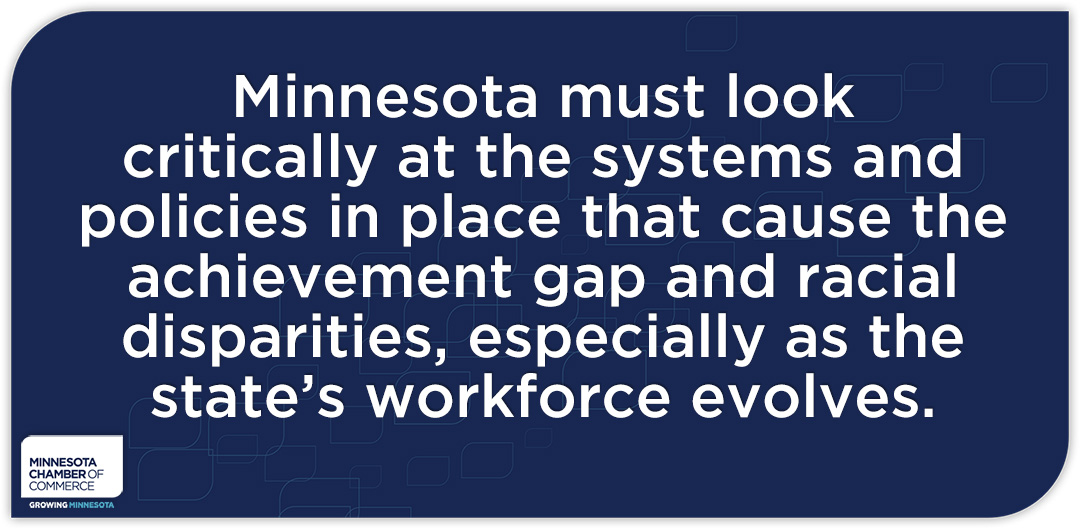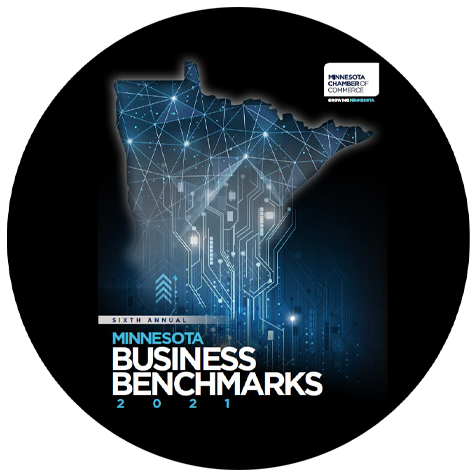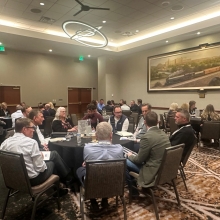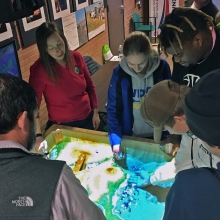2021 Business Benchmarks: Workforce inclusion
Leaving no one on the sidelines of our economy
Minnesota’s hard-working, highly-skilled workforce has long-driven its economic success. But for the state to continue to compete into the future, it must work to break down barriers to employment and advancement, close achievement gaps, and understand and utilize the demographics of our future workforce.
The economic disparities and well-documented achievement gap between Minnesota’s white population and communities of color is in such stark contrast to other elements of economic competitiveness, it has been referred to as the Minnesota paradox. While Minnesota has outpaced the national average in many categories such as fewer people in poverty, higher incomes per capita and higher educational achievement – this is not true for many of Minnesota’s communities of color.
Although these racial disparities have been apparent for some time, they were brought to the forefront in 2020 with the death of George Floyd and subsequent protests and civil unrest. Minnesota companies are taking meaningful steps toward making the workforce more diverse and offering economic opportunities to those who were historically placed on the sidelines of the economy.
3M will invest $50 million over the next five years in racial justice and equity projects. They include a $5 million scholarship through the United Negro College Fund (UNCF) for students in St. Paul who attend historically Black colleges and universities, and expanding their STEM initiatives – 3M Manufacturing and Academic Partnerships – in St. Paul Public Schools.
Best Buy launched a successful reverse mentorship program that pairs senior leadership with employees at earlier stages of their careers with the company. These professional relationships help employees from different backgrounds, with different life experiences, better understand each other. After many small retailers were destroyed in Minneapolis and St. Paul this summer, Mall of America stepped in to offer free retail space – and hope – to these business owners. Many of these businesses are owned and operated by minority entrepreneurs and serve ethnic community interests.
Cargill is hardwiring equity into all its talent practices. They recently overhauled nearly 1,000 job descriptions to remove biased words, added tools to assess future leaders on their ability to lead diverse teams and are building capability with simple practices like starting every meeting with an inclusion moment.
General Mills is leading the way toward integrating allyship in their work environment. They offer resources that help support employees who represent traditionally underserved communities and make these resources available on their website. An authentic support network can create a welcoming workplace for employees from all backgrounds.
As part of its commitment to creating a culture that is diverse, equitable and inclusive, Target released a detailed racial and gender breakdown of its team across all levels of the organization. They also announced plans to increase representation of Black team members across the company by 20% over the next three years.
This challenge is an economic imperative. Minnesota must look critically at the systems and policies in place that cause racial disparities, especially as the state’s workforce evolves. According to the State Demographer, labor force growth could only grow 0.1% over the next five years, and 0.2% from 2025 to 2030. The fastest growing segment of our workforce will be populations of color.
Solving racial disparities and creating opportunity for all Minnesotans will take a concerted and collaborative effort between the private and public sector, community groups and all of us as individuals. The Minnesota Chamber is committed to reducing barriers and creating opportunities so that all Minnesotans have the opportunity for meaningful employment and a high quality of life in the state. It’s important that no Minnesotan is on the sidelines of the economy.
Where does Minnesota rank?
Click on icons to expand. Mobile users, click here to view the full, mobile-friendly dashboard.

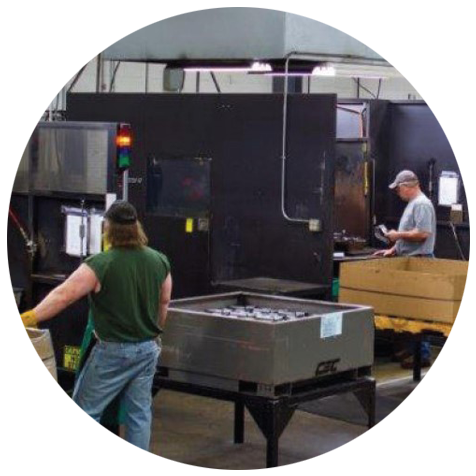

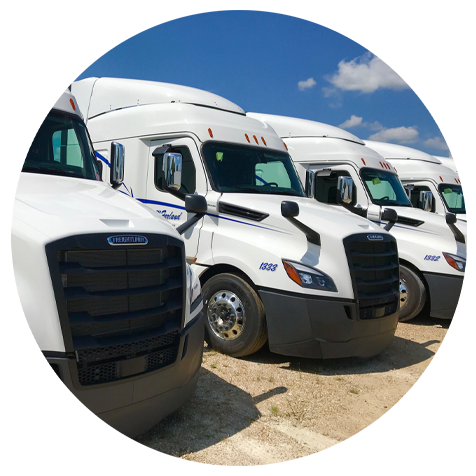
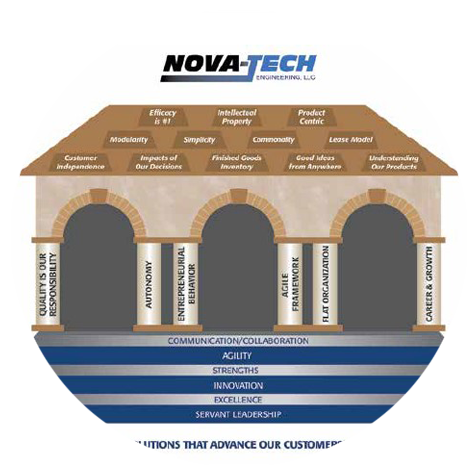
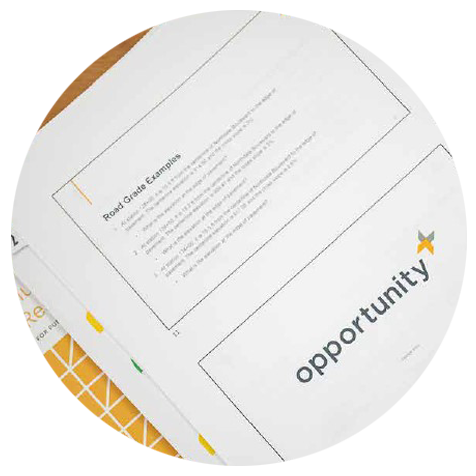
QUESTIONS ABOUT THE 2021 BUSINESS BENCHMARKS?
We'd love to hear from you! If you have questions on this year's Business Benchmarks or would like to get involved on the topics listed above, please contact us or reach out to one of our expert staff.
